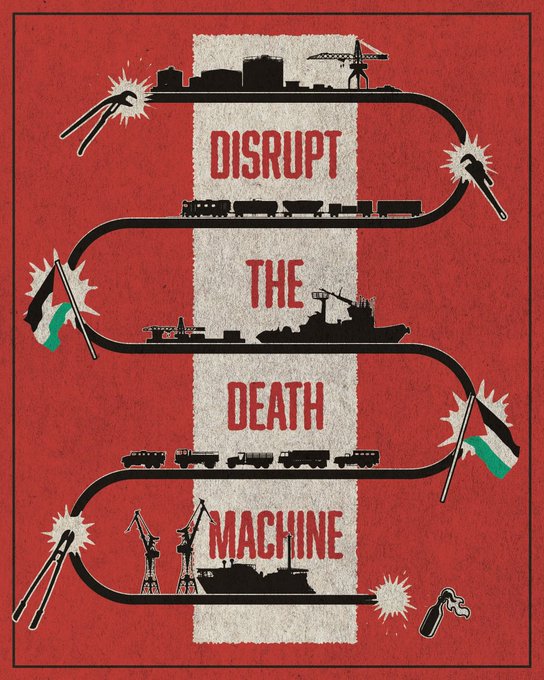“In a matter of hours, Israel carries out the bloodiest massacre in its history” 7 Nov. 2023, official statement by the Geneva based Euro-Med Human Rights Monitor.
The UN High Commissioner for Human Rights, Volker Turk adopts Austria’s agenda, endorsing crimes in Gaza ahead of his visit to the Rafah crossing on 8 Nov. 2023. Today marks one month of Israeli aggression on Gaza since 7th Oct. 2023. This continuous Israeli military aggression on Gaza killed 10581 persons of which are 4412 children, 2761 women and 9641 civilians according to the latest stats for 31 days of aggression released by the Euromed Human Rights Monitor.
Moreover, according to the Israeli financial newspaper, the Calcalistech talks about the potential global cost of “Gaza War” of “$1 trillion as the expansion of the “war” between Israel and Hamas to multiple fronts, including Iran, could raise the price of oil from $90 to $150 per barrel, push inflation higher, and cut global GDP”. So far the costs are estimated by $50-51 billion as various news agencies such as Reuters among other media outlets are sharing this number in reference to a report by Calcalistech that I could not find.
According to the annual Global Risks Report released by the World Economic Forum (2023 edition), the report ranks the perceptions of the global risks according to its severity over short (2 years) and long term (10 years) durations. For the short-term duration which is in 2 years span (2024-2025), the premier global risk is the cost-of-living crisis followed by natural disasters and extreme weather events and geoeconomic confrontation. Whereas in terms of the 10 years span, the top 3 global risks are failure to mitigate climate change, failure of climate change adaptation and natural disasters extreme weathers. Having a general look at the global risk map and the interconnection between the various risk categories; societal, geopolitical, economic, environmental, and technological aspects. For instance, by looking at the cost-of-living crisis which is the reality of many countries around the world, it is directly associated with a prolonged economic downturn as well as the country’s debt crisis. While looking at this, it makes perfect sense to also look at the evident risk of natural disasters and extreme risks as well as the natural resources crises. Both global risk factors coupled with other environmental risks, we are foreseeing a large-scale involuntary migration.

When the WEF report was released -usually at the beginning of the year-, it was taking into consideration the circumstances of Covid-19’s worldwide economic shut down in addition to the Russia-Ukraine conflict as this led to continued disruptions in the flows of energy and food from Russia and Ukraine. The crisis of cost of living is basically looking at the availability and affordability of basic necessities which will be impacting people all around the world in terms of making the large segments of the population economically vulnerable and fragile globally. Moreover, Oxfam released its report in January 2022 after the Covid-19 lockdown titled Inequality Kills; where they stated that “The wealth of the world’s 10 richest men has doubled since the pandemic began. The incomes of 99% of humanity are worse off because of COVID-19. Widening economic, gender, and racial inequalities—as well as the inequality that exists between countries—are tearing our world apart.”.
On Sunday – 5 Nov. 2023, the Israeli Heritage Minister Amichai Eliyahu (Otzma Yehudit) made a statement on the Radio Kol Barama where he was responding to the question if the Israeli occupation force should drop an atomic bomb on the Gaza Strip he responded “That’s one way… We wouldn’t have given the Nazis humanitarian aid … There’s no such thing as innocents in Gaza.”. The irony is that, as of today and according to a number of websites and here we are citing the sources coming from the Euromed Human Rights monitor released on 2 Nov. 2023, it is 25000 tons of bombardment which is equivalent to 2 nuclear bombs that was used by Israeli occupation force in their aggression on Gaza.
The Times in their article on 3 Nov. 2023 “what to know about U.S. military support for Israel’s Gaza offensive, covered the point of view of the Assistant Secretary of State for Political-Military Affairs, the bureau which oversees arms transfers, Clarke Copper stating that “Israeli equipment and defense material will be resupplied based on their burn rate—the speed at which they are used in the ongoing military operations”. However, the Pentagon Spokesperson Sabrina Singh questioned that the “the U.S. is not putting any limits on how Israel uses U.S.-provided weapons in its war against Hamas.”.
The Politico in its recent article “Around the world, the left is tearing itself apart over Israel” released in 5 Nov. 2023, is mapping the various positions of European countries between the official statements-positions of a country versus the actual grassroot realities being manifested through protests and demonstrations. The article gives a feeling of “tearing itself apart” in a way “reducing it” to approving/facilitating the ceasefire so humanitarian aid/relief can take a place. While the western world is falling into this “chaotic” massive status of controlling media and news, censorship, to banning Kuffeye which is a symbol of showing solidarity with the Palestine and Palestinians, and the newly activated laws that are disguised by anti-terror and antisemitic laws that would put a person in jail or even deportations.

There is a lack of scientific based research showing the effects of heavy bombardment and weapons testing on the environment as this is something we are discussing in our casual gatherings to what is called “seismic waves”. Add to that, to what we all know related to the natural disaster occurred in the region this year 2023 such as Turkey-Syria earthquake occurred on 6 Feb. 2023 with 7.8 magnitude, to the earthquake in Morocco on 8 Sep. 2023 with 6.8 magnitude, to the hurricane in Libya on 10 Sep. 2023. Furthermore, this week alone, the world is already witnessing several natural disasters: floods in Somalia, Nepal earthquake with 6.4 magnitude, Storm (and floods) Ciaran in UK as well as Arctic blast is expected in these upcoming few days, to the heavy rains and floods in Dubai. Moreover, as we are entering the winter season which is a suitable occasion for heavy rains and floods as Gaza city is also highly susceptible; similar events already happened on 10 Jan. 2023.
The Institute for Economics & Peace released their recent report analyzing ecological threats, resilience & peace in Nov. 2023. The Ecological Threats Report focuses on four categories of threat that are considered to have act directly as a driver for initiating conflicts: food insecurity, natural disasters, demographic pressure, and water risk in terms of having access to clean drinking water. Water risk is a significant ecological threat that keeps worsening globally but especially in the Middle East and North Africa. By looking at the numbers pertaining occupied Palestine; its overall score is 5 (where 1 is very low and 5 is server) and in terms of the four categories: food insecurity: 3, natural disaster: 1.35, demographic pressure 5, and water risk is 3.
Finally, let us have another final look at the World Economic Forum’s Global Risk Indicators report where it talks about societal polarization and it being defined as “the erosion of social cohesion and societal polarization” as they are augmenting in severity which would imply having loss of social capital and fracturing of communities leading to decline in social stability, individual and collective wellbeing and economic productivity that is triggered by many factors.
Hopefully, by showing the cost of war versus the cost of peace as the Institute of Economic Peace is working on, a human truce would happen in Gaza so who remains living in this ongoing televised genocide, would restore what remained out of the world’s morals.
Suha Ayyash



